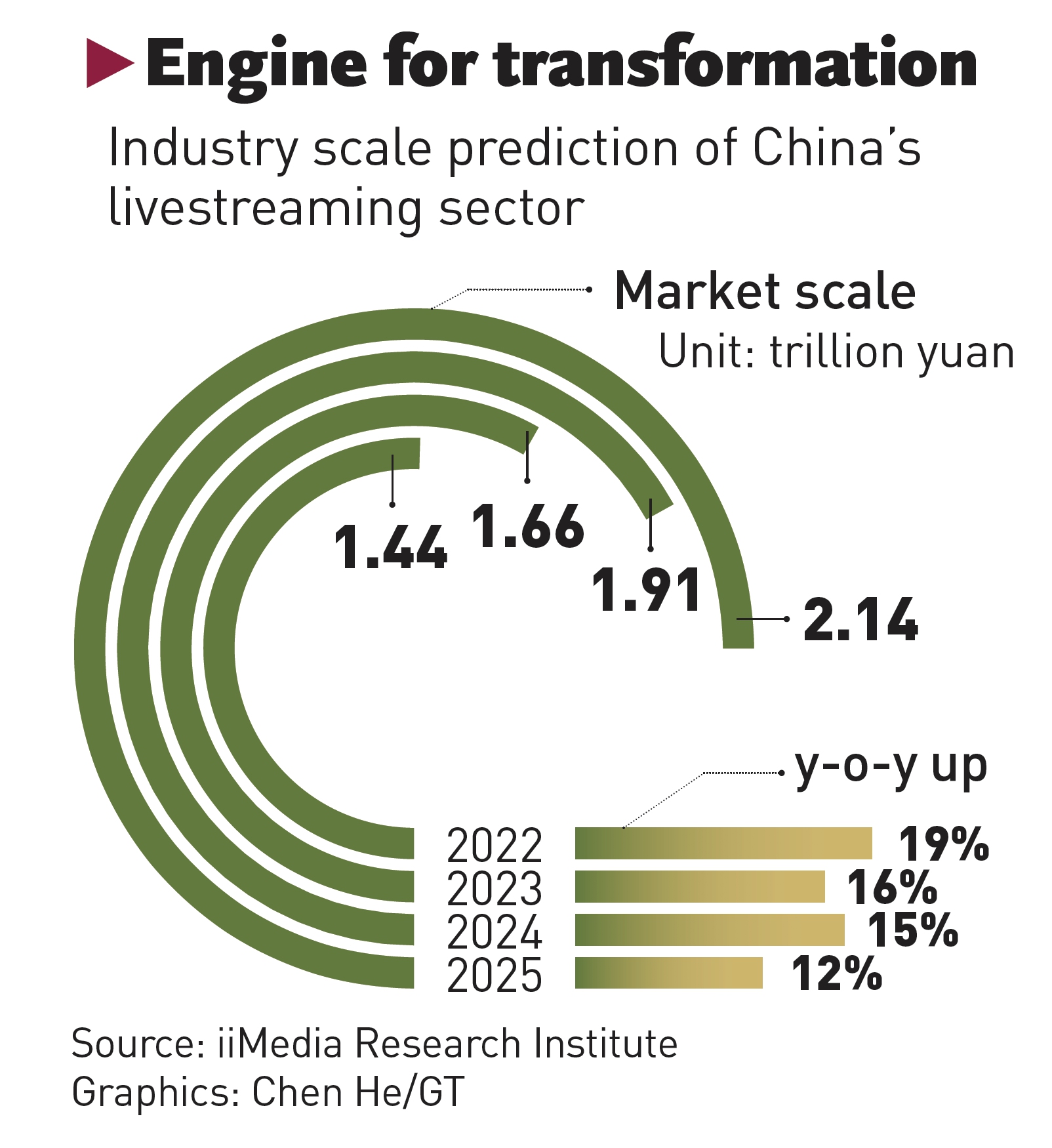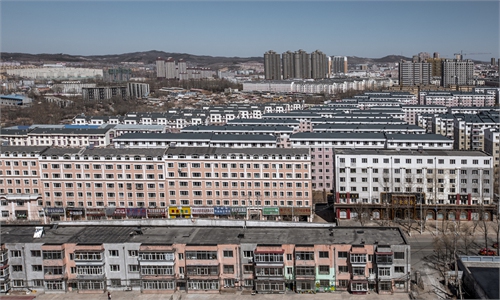Chinese youth flock to smaller cities as internet era presents opportunities to less-developed regions
Internet era presents opportunities to less developed tiny areas

A livestreamer promotes local produced rice at Qiandongnan Miao and Dong Autonomous Prefecture, Southwest China's Guizhou Province. Photo: VCG
The 2022 Double 11 shopping festival is around the corner, Li Zilei, 36, a manager of an online streaming base at Caoxian county in East China's Shandong Province, is busy in preparing goods for the coming flood of orders together with his young colleagues.
"In addition to preparing our goods for sale, we have planned multiple promotion and discount offers," Li told the Global Times on Tuesday, noting that the local logistic network has also fully prepared.
Li revealed that his online streaming base has recorded decent sales volume so far this year, with monthly revenue reaching about 100,000 yuan ($13,687). Currently there are 300 livestreamers work in the online streaming base with an average age of 30.
E-commerce boom
The small town came into the spotlight for its booming e-commerce sector.
"The e-commerce sector is popular among young people. In recent years, more jobseekers have chosen to stay in the county which further improved the popularity of Caoxian county and boosted local employment," Li said.
In the 1980s and 1990s, some villagers sell performance costumes for photography studios. However, due to a fragmented market and weak demand, the county had been facing the challenge of slow long-term growth.
At present, online sales of performance costumes in Caoxian county account for more than 70 percent of retail volume through the Taobao platform, according to local government analysis.
Currently there are more than 350,000 people engaging in the e-commerce industry equal to providing work for one in every five people in the county, as online stores and livestreaming become popular choices for young people looking for work.
Caoxian's example offered a glimpse into the transformation of small villages, towns and cities across China that are attracting more and more young people and emerging business with lower living costs, less pressure, and a lower barrier to starting a business compared with bigger cities.
Another example is Dayuan village in Guangzhou, South China's Guangdong Province. It is notable for becoming the first "Taobao village" in China with annual sales exceeding 10 billion yuan. During the "618" shopping spree this year, the village's e-commerce sales quadrupled from normal years, China News Agency reported.
Located on the outskirts of Guangzhou, the village used to be home to washing and printing factories, before embracing e-commerce business in 2012 which revitalized the whole village.
In 2020, Dayuan was home to more than 5,000 e-commerce companies and more than 30,000 e-commerce workers, according to media reports.
The trend is not only seen in eastern and southern China, but also in less developed northeastern China.
Hegang, a city in Northeast China's Heilongjiang Province also gained attention from social media after a woman said she bought an apartment in the city with just 15,000 yuan.
"I bought a home of 46 square meters with 15,000 yuan which is enough for one person to live," said the buyer surnamed Zhao, a 25-year-old freelance illustrator.
"Moving to a new city doesn't make much difference," Zhao said, adding that her work can be done online, mostly illustrating at night, sleeping during the day, so it is suitable to live in a city like Hegang.
Back in 2019, Hegang became famous overnight for selling houses at "cabbage like prices" as the city faced a population exodus amid industrial changes.
Recently, the city has attracted many buyers like Zhao from all over the country because of its highly affordable real estate, which also helped to revive the city's local economy.
The city's gross domestic product (GDP) reached 35.42 billion yuan in 2021, an increase of 7 percent over the previous year, according to the data released by the Hegang municipal government on October 20.

Graphics: Chen He/GT
Cities in transformationThese cities and counties provide a balanced lifestyle at a low cost for young people, especially those engaged in flexible online work, Tian Yun, a veteran economist based in Beijing told the Global Times on Tuesday.
If local government can keep improving the business environment, improve infrastructure, encourage taxation reduction and innovation, and provide a better environment for these young people to take advantage of this low cost lifestyle, it may bring these small cities and towns new vitality, Tian added.
Local officials in Hegang plan to build a provincial level e-commerce livestreaming park and launch a cross-border e-commerce trading industrial park with an expected annual transaction value exceeding 500 million yuan, according to a local government plan released in 2022.
The city also plans to promote financial services, modern logistics, data analysis, information service and other emerging industry development.
Behind the phenomenon is a trend toward China's new urbanization transformation in the new era, and the transformation of young people's employment and spending mindset, Chen Jia, an independent research fellow on international strategy told the Global Times on Tuesday.
"The arrival of young people in smaller cities means new opportunities for transformation, which is of great significance to the development of small- and medium-sized cities," Chen said.
It is expected that in the future, this kind of trend will be further deepened. Eventually, China will realize the overall situation of high-quality development with highly coordinated and balanced two-way flow between urban and rural areas, Chen said.



